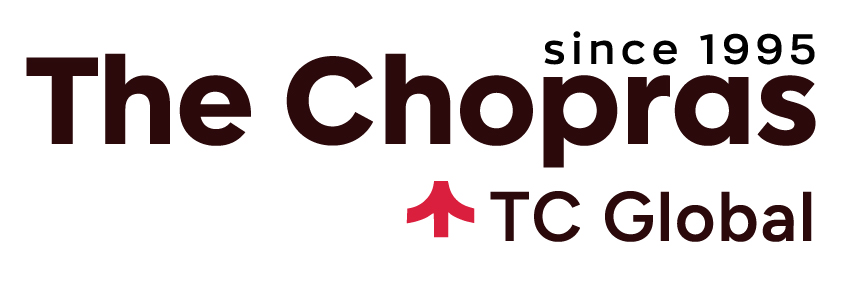If you ask, “How do I choose when it comes to UC Davis vs Santa Clara University?” this is where you’ll get the answers. Located about 100 miles from each other in California, UC Davis and Santa Clara University differ in campus size, academic focus, and location.
UC Davis is a large public research university within the UC system known for its strong emphasis on agriculture, environmental science, and veterinary medicine. Its expansive, rural campus supports extensive research opportunities across various disciplines.
Santa Clara University, a smaller private Jesuit institution in Silicon Valley, is particularly known for its business, engineering, and law programs. The university’s proximity to major tech companies provides a unique advantage, especially for undergraduates. While Santa Clara has a strong reputation for undergraduate education, particularly in encouraging leadership and ethics within a liberal arts framework, it is less known for its master’s and doctoral programs than UC Davis, which offers more robust graduate-level research opportunities.
Here’s a deeper look at these institutions – covering academics, campus life, financial aspects, and career opportunities to help you make the best choice for 2024
Overview of UC Davis and Santa Clara University

The two California schools offer very different student experiences, whether academics or campus life. The main source of distinction is that the University of California Davis is a public university, while Santa Clara is a private university.
As a state university, UCD has a larger student population, an extensive campus, larger class sizes, immense research budgets, lower tuition rates, and subsidized fees for California students. SCU, as a private institution, is smaller, has a less diverse student body, a smaller campus, and higher fees that apply to both local and foreign students.
Moreover, UC Davis has a greater reputation and is more renowned globally than Santa Clara. While reputation alone cannot be a factor in deciding, what other aspects should one look into?
Brief History and Background
University of California Davis
Also referred to as UCD, UC Davis, or just Davis, the University of California, Davis, is a public, land grant research university in Davis, California. It is a member of the University of California system that includes UC Berkeley, UCLA, UC San Diego, UC Santa Cruz and five other institutions spread throughout the state. UC Davis is the northernmost of all the UC campuses.
Even though the school originally opened in 1908, it was primarily set up as the agricultural and science-based instruction extension of UC Berkeley. Over the years, it grew to include the Division of Agricultural Engineering, Division of Chemistry, School of Veterinary Medicine, and a graduate school. By 1951, the College of Letters and Science was established, and, in less than a decade, in 1959, it became a general campus under the University of California System.
Still renowned for its programs in agriculture and veterinary medicine, Davis is also known for its medical research centre, engineering school, biological sciences, and geology program. UCD ranks 28th in the country (US News and World Report 2024) and 130 worldwide (QS World University Ranking 2025).
Santa Clara University
One of the oldest operating institutions of higher learning in California, Santa Clara University (SCU) is a private Jesuit university in Santa Clara, California. Originally named Santa Clara College, the school began as a boys’ preparatory school in 1851 and began offering college courses in 1853.
By 1912, the college was awarded university status with the addition of engineering and law schools. The university became co-ed in 1961 and continues to be so till today. A smaller university with more individualized attention, SCU enrolls about 9,000 undergraduate and graduate students from all over the world.
Known for its undergraduate programs in arts, sciences, business, and engineering, SCU ranks 60th in the country, according to metrics published by US News and World Report. Although the university is not ranked globally, the QS US Uni ranking places it 85th.
Key Statistics and Rankings
Here is a snapshot view of Santa Clara and UC Davis Universities.
| UC Davis | Santa Clara | |
| Ownership | Public | Private |
| Campus | Davis, CA | Santa Clara, CA |
| Nickname | Aggies | Broncos |
| Mascot | Gunrock, the Mustang | Bucky, the Bronco |
| U.S. News National Rank 2024 | 28 | 60 |
| QS World University Rank 2025 | 130 | N.A. |
| Undergraduate Student Body | 31,797 | 6,115 |
| Graduate Student Body | ~ 6,800 | 3,063 |
| % of International Enrollment | ~ 15% | ~ 13% |
| Average Acceptance Rate | ~ 40% | 44% |
| Student to Faculty Ratio | 21:1 | 12:1 |
| Number of Undergraduate Programs | 107 majors | 50+ majors |
| Number of Graduate Programs | 101 | 50+ |
| Research Expenditure | $1 billion + | $9 million+ |
| Number of Athletic Teams | 25 NCAA Division I teams | 20 NCAA Division I teams |
| Number of Clubs and Student Organisations | 800+ | 170+ |
| Colours | Aggie Blue and Gold | Red and White |
UC Davis vs Santa Clara University: Academic Comparison

One of the key areas of comparison when looking at UCD vs SCU is academics. The undergraduate or graduate courses that they offer, their choices and flexibility, ranking, degrees and class sizes, academic calendars, research facilities and budgets can become important factors in deciding which college is best suited for you.
Undergraduate Programs
Program Options and Focus Areas: One of the key differences is that Davis is a much bigger university, funded by the state that it has more undergraduate majors (100+) to choose from, when compared to Santa Clara, which has about 50+ undergraduate study options. This significant difference in numbers is not a major issue, if you are clear about the path you want to take, but if you are looking to explore options as a bachelor’s student, then UCD has a lot more choices.
UCD is known for its undergraduate programs in psychology, neurobiology and other biological sciences, economics, computer science, animal sciences, engineering, and environmental science programs. In contrast, the most known majors at Santa Clara are finance, communication, psychology, mathematics, computer science, and engineering.
However, when it comes to reputation, UC Davis is far ahead of Santa Clara. As one of the prestigious University of California schools, Davis ranks third in the UC system after UC Berkeley and UCLA. It is also tied with UC San Diego. Compared to that, Santa Clara University is not as recognised, primarily due to its size and ranking.
The flip side of Davis’s ranking and reputation and the school’s status as a public university is its large student population. Unlike Santa Clara, which has small classes and a lower student-to-faculty ratio, courses at UC Davis, especially the lower division ones, can have a large number of students and very little personal attention from the professors. UC Davis tends to push motivated students towards self-study.
Standardized Test Scores and Other Admission Criteria: UCD is test blind till Fall 2024. If you submit SAT or ACT scores as part of your application, they may be used as an alternative method of fulfilling minimum requirements for eligibility or for course placement after you enroll. The university is planning for a new UC-endorsed test for California residents. Instead of standardized tests, Davis applicants must meet the A-G subject requirements that include
A. History/social science – 2 years
B. English (or language of instruction) – 4 years
C. Mathematics – 3 years (4 years recommended)
D. Laboratory science – 2 years (3 years recommended)
E. Language other than English – 2 years (3 years recommended)
F. Visual and performing arts – 1 year
G. College preparatory elective – 1 year
The high school GPA requirement for California residents is 3.0. Non-California applicants should have a GPA of 3.40 or higher.
In contrast, Santa Clara University has a test-optional policy. For those who wish to submit ACT/ SAT scores for consideration, self-reported test scores can be submitted through the student’s SCU application status portal. The minimum high school course requirements include
- History and Social Science: 3 years
- English: 4 years
- Mathematics: 3 years required; 4 years recommended
- Laboratory Science: 2 years required; 3 years recommended
- Language Other Than English: 2 years required; 3 years recommended
- Visual and Performing Arts: 1 year recommended
Core Curriculum: Both universities have a fairly intensive core curriculum requirement that all undergraduate students must meet. The UC Davis General Education (GE) has two components: topical breadth (52 units covering arts, humanities, science, engineering, and social sciences) and core literacies (35 units covering composition, civic and cultural literacy, and quantitative and scientific literacies).
Santa Clara University’s Core Curriculum provides a humanistic education leading to an informed, ethical engagement with the world. It is divided into three components:
- Foundations (covering Critical thinking, Cultures, Second language, Maths, Religion and theology)
- Explorations (covering Ethics, Civic Engagement, Diversity, Arts, Natural Sciences, Social Sciences, Science, Technology, and Society) and
- Integrations (Advanced writing, Experiential Learning for Social Justice, and Pathways)
Class Sizes: Santa Clara University has smaller classes and more individualized attention due to its smaller student population. The university has an average student-to-faculty ratio of 12:1, and over 44% of its classes have fewer than 20 students.
In contrast, UCD is a much bigger school with a higher student-to-teacher ratio, at about 21:1. Classes are typically larger, and some popular core programs can have as many as hundreds of students.
This can work as a pro or a con, depending on what type of student you are. Some students prefer smaller classes and more direct attention from their teachers, while some thrive better in a larger, more competitive space with more opportunities for self-study.
Top Majors:
| University of California Davis | Santa Clara University |
|
|
Graduate Programs
Graduate Program Options: The graduate student body at UCD is about double the size of SCU’s graduate student population. Proportionally, UCD also offers over 100 graduate programs to choose from when compared to SCU’s 50. UC Davis’s graduate schools are world-renowned, especially for their medicine, agriculture, veterinary sciences, geophysics, and natural sciences courses.
College Admissions: Both these California schools are moderately selective in their admission processes, with their average acceptance rate around 40%. This does not make admissions easy, nor is it as intensive as UCLA, Stanford, or any of the Ivies.
The minimum admission criteria in both universities include a valid baccalaureate degree from a recognised university (GPA varies with departments), a strong application form with a well-written Statement of Purpose (SOP), relevant work experience (for some courses), and English proficiency test scores (for international students). While both universities do not dictate a minimum GRE score, most graduate programs in both universities require students to submit standardized test scores.
Top Graduate Programs:
| UC Davis | Santa Clara University |
|
|
Global Reputation: As reflected in their rankings, UC Davis, and the University of California System as a whole has a better global standing when compared to Santa Clara University. UC Davis ranks 28th in the country while Santa Clara ranks 60th. At the graduate and research level, UC Davis’ infrastructure and resources are more extensive when compared to Santa Clara.
That said, a university’s reputation alone cannot become a deciding factor. As a prospective student, you must look into the course curriculum, the fees involved, alumni and networking opportunities, professors, research facilities, location and industry connections that best align with your career goals.
Overall and Subject Rankings
| University of California-Davis | Santa Clara University |
| Overall Rank US News 2024: 28 | Overall Rank US News 2024: 60 |
| Times Higher Education WUR: 59 | Times Higher Education WUR: N.A. |
| QS WUR 2025: 130 | QS WUR 2025: N.A. |
| Subject and Other Ranking (Source: QS Global Subject Rankings 2024/ US News) | |
|
|
Constituent Schools
The schools and colleges that constitute UC Davis are –
- College of Agricultural and Environmental Sciences
- College of Biological Sciences
- College of Engineering
- College of Letters and Science
- School of Graduate Studies
- Betty Irene Moore School of Nursing
- Graduate School of Management
- School of Education
- School of Law
- School of Medicine
- School of Veterinary Medicine
Santa Clara University is composed of six schools and colleges –
- College of Arts and Sciences
- Leavey School of Business
- School of Engineering
- School of Education and Counseling Psychology
- School of Law
- Jesuit School of Theology
Research Opportunities
Both schools promote a culture of research from the undergraduate level. However, if you are keen on graduate or doctoral research opportunities, UC Davies is a better choice. UCD is an R1 research university with a research budget of around $1 billion. The university has very high research activity, conducted through its numerous research centres and institutes. UC Davis allocates resources for the study of a wide range of topics, including cancer and marine, nuclear, food, and environmental sciences. Just in 2019-20 alone, UC Davis has achieved over 140 records of inventions!
In contrast, Santa Clara is an R2 research university with an annual research expenditure of less than $10 million. As a smaller private university, SCU has the resources and reach of a larger public university like UCD. That said, the university does provide opportunities across disciplines through various centres and programs, including the Frugal Innovation Hub by the School of Engineering, Lindsay Halladay’s neuroscience lab, and the Arts for Social Justice program.
Key Dates for Application
In this section, you’ll find the key dates for application and admission into undergraduate programs (Fall semester) to get a sense of the timeline. Graduate schools have a different timeline. It is also recommended that you verify with the specific department/school that you are applying to ensure they do not follow a different cycle.
| Important Dates | UC Davis | Santa Clara University |
| Early Action (EA) Deadline | N.A. | November 1 |
| Early Decision (ED) Deadline | N.A. | ED I – November 1 ED II – January 7 |
| Regular Decision (RD) Deadline | November 30 | January 7 |
| Financial Aid Application Deadline | March 2 | EA – November 15 ED – November 15 RD – February 1 |
| Decision Posted in | End of March | EA – Late December ED I – Late December ED II – Mid February RD – April 1 |
| Deadline to accept the offer of admission | May 15 | EA – May 1 ED I – January 7 ED II – March 1 RD – May 1 |
| Average Acceptance Rate | About 40% | About 44% |
Admission Options to be considered in the UCD SCU debate:
- UC Davis does not accept the Common Application or the Coalition Application by Scoir. You must apply through the University of California Application portal. The advantage is that you can apply to multiple UC campuses with just one application. Santa Clara accepts the Common Application.
- The USD application fee for local California students is $80 while it is $95 for non-state and international students. All applicants pay a non-refundable fee of $70 for applying to SCU.
- Like the other UC schools, Davis also has only one admission pathway. All applicants go through the regular admission route. In contrast, SCU has an EA, 2 EDs and a regular admission pathway.
- SCU EA is non-binding and allows you to get an earlier decision from the university. ED is binding and is opted for by students for whom Santa Clara is the first-choice school.
Academic Calendar
Both schools follow a quarter system, where the academic year is divided into four quarters, with each term extending about 2 – 3 months with breaks in between. One of the biggest advantages of a quarter system is that it gives students more flexibility to choose courses and interact with more faculty members. However, the courses can be intensive since the material is covered in a shorter duration.
UC Davis vs Santa Clara University: Campus Life and Environment

Despite both being California universities, they offer varied campus experiences to their students, due to their sizes, student population, ownership status and campus locations. So, let us look at some of the other factors that can make a prospective student choose Santa Clara or UC Davis.
Location
While both schools are located in California, UC Davis is just a few miles from the capital city of Sacramento, while the city of Santa Clara is about 3.5 miles from San Jose and only about 13 miles from Silicon Valley. San Francisco is about a 30-minute drive from SCU.
Davis is a quintessential college town, renowned for being green, sustainable, friendly and laid back. The Davis downtown is very student-friendly, with college goers biking or walking across the town. Santa Clara, located on the southernmost tip of the SF Bay, is less of a college town and is home to some of the leading tech companies in the world.
While the main UCD campus is located in Davis, the university also has specialised centres in other places. The UC Davis Medical Centre is in Sacramento, an Environmental Research Centre on the shores of Lake Tahoe, a marine lab on the buffs of Bodega Head, a veterinary medical centre in San Diego, and centres in Sacramento and San Francisco that offer part-time MBA programs.
Campus Size and Facilities
The main UC Davis campus is immense in size, expanding about 5,300 acres with over 1,100 buildings. To traverse the large campus, students primarily use bikes, e-scooters, and the university bus services. UC Davis is one of the biggest bike schools in the country. The large campus is bustling with student life, with about 39,000 graduate and undergraduate students who call it their home.
The campus provides numerous facilities for its students, including state-of-the-art classrooms, research centres, labs, and libraries. The Activities and Recreation Centre (ARC) houses numerous fitness centres, a strength room, exercise studios, a rock wall, multiple courts for various sports, locker rooms, study areas, a coffee shop, and a market.
In comparison, Santa Clara is a very small school, spread over about 106 acres and 50+ buildings, that accommodates only about 9,000 undergrad and grad students. In addition to the academic and research facilities, the campus includes housing, a performing arts centre, a museum, an athletic facility, and other amenities, including quiet study spaces and a boat house.
Student Activities and Organisations
Both schools have an extensive culture of athletics and extracurricular activities to help students explore other interests. UCD has 25 varsity teams that compete in NCAA Division I, while SCU has 20. In addition, the universities have club sports and other athletic facilities for recreation and fitness. When it comes to student clubs and organizations, UCD has over 800, while SCU has over 170. These numbers are proportional to the total student body of both the universities.
Housing and Accommodation
Unlike many universities that make on-campus housing mandatory for freshmen students, UC Davis does not require students of any year to live on campus. That said, about 90% of first-year students choose to live in one of their residence halls or university apartments. On-campus housing includes recreation centres, student markets, residential academic centres, dining halls, and shared interest communities.
Considering the four years of undergraduate study, about 35% of students live on campus. The university is also working to increase student accommodation proportionally to its enrollment. Considering that Davis is a college town, there are numerous options for off-campus stays as well.
In contrast, Santa Clara requires freshmen and sophomores to live on campus. Overall, about 53% of the school’s undergraduate population lives on campus. SCU has eight residential learning communities with dorms and university villas, in addition to graduate housing for its students. The general opinion is that SCU has better facilities than the state-owned UCD campus.
UC Davis vs Santa Clara University: Financial Aspects

If costs are an important consideration in your decision-making process, then there is a clear advantage in choosing UC Davis over Santa Clara University.
As a public university, UCD is significantly more affordable than a private university like SCU. This is all the more important, for, as a resident of California, you can also be eligible to the university’s subsidised rates.
That said, both schools also have highly inclusive financial aid programs. This table provides a general picture of the cost of studying at each university.
| Annual Rates | University of California-Davis | Santa Clara University |
| Tuition (Bachelor’s) | CA Resident – $14,436 Non Resident – $48,436 |
$60,369 |
| Tuition (Master’s, not including professional programs) | CA Resident – $15,141 Non Resident – $30,243 |
$24,696 – $43,416 |
| MBA Tuition | CA Resident – $49,502 Non Resident – $61,747 |
$61,929 |
| Housing (On-Campus) and Meal plan | $20,000 – $22,000 | $18,819 |
| Off-Campus Housing | $10,000 – $15,000 (rent) | $22,016 (housing and food) |
| Types of Financial Aid | 1. Grants 2. Scholarships 3. Loans 4. Tuition Assistance 5. Work Study 6. Learning Aligned Employment Program |
1. Federal Grants 2. Cal Grants 3. University grants 4. Merit Scholarships 5. Academic Scholarships 6. External Scholarships |
| International student scholarships |
|
|
| Estimated average grant for an aid student | Around $20,000 | $35,551 |
| Demonstrated Need Cover | Scholarships and awards for family incomes up to $217,000 | 70 – 80% |
Here are a few important points to be kept in mind.
- Whether you are a resident or not of the state of California, UC Davis, as a public university, is a lot more affordable than Santa Clara, a smaller private university.
- The tuition fees are average figures calculated for a typical academic year of 9 months. The fee will be higher should you choose to take extra courses in the summer months.
- The tuition fee amounts in the table indicate only the cost of attendance. They do not include books, student health insurance, or other expenses. Student insurance alone can cost between $3,000 and $8,000 a year.
- UC Davis’s aid plans are designed for US citizens or permanent residents and are primarily need-based. International students typically look for external sources of funding.
- As a private university, SCU similarly addresses domestic and international students’ needs. They have both need-based and merit options to choose from.
- International students cannot apply for federal or state-sponsored aid.
Santa Clara vs UC Davis: Career Prospects and Alumni Network
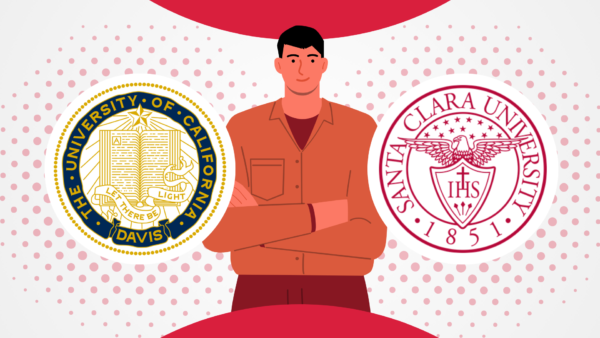
Here’s a look at the post-graduation outcomes and opportunities.
Employment Ratio
The freshman graduation rate is about 86%, meaning 86% of students who enter UC Davis graduate with a degree within a 6-year period. While the employability rate varies with each department, the Davis Graduate School of Management has a success rate of over 90%. If you look at the 2023 class at SCU, about 77% of the graduates who were seeking employment were employed within six months. The four-year graduation rate is around 81%, with a median salary of $71,888.
Notable Alumni
Both universities have vibrant alumni associations that extend worldwide. UCD’s alumni network, called the Aggie Network, supports over 312,700 alums while SCU has over 100,000 living alums across the globe.
Notable Alumni from UCD
- Charles Rice, Virologist and Nobel Prize Laureate
- Hasan Minhaj, Comedian and TV host
- London Breed, Politician
- Ryan Roslansky, CEO of LinkedIn
- Tracy Dyson, Chemist and Astronaut
Notable Alums of SCU
- Arthur Schmidt, Oscar-winning film editor
- Khaled Hosseini, Author
- Jeff Brazil, Pulitzer Prize-Winning Journalist
- Chris Malachowsky, Co-founder of Nvidia
- Tina Panontin, Chief Engineer, NASA Ames Research Centre
Career Services
Both universities have extensive Career Centers that assist their students in gaining practical experience, building networks, and communicating their aptitudes and skill sets to prospective employers. These centres also play an instrumental role in building leadership and specialised skills that are essential to a workplace.
The career centre connects students to internship opportunities and prospective employers in both universities through seminars, job fairs, and numerous other on-campus events. They also provide access to Handshake, where students can directly connect with prospective employers. UC Davis also offers options to join professional associations or try out job shadowing, which allows students to build networks with industry members.
UC Davis vs Santa Clara University: Conclusion

Choosing between UCD and SCU involves considering various factors such as academic strengths, campus life, financial implications, and career prospects. Both universities offer unparalleled opportunities, but your decision should align with your personal and professional goals.
Here are the key differences between the two universities –
- UC Davis is a public university while Santa Clara is a privately owned Jesuit institution.
- As a public university, Davis is more affordable when compared to the sticker price of SCU. Even if you are an international student not eligible for subsidy, the cost of tuition at UCD is lesser than at Santa Clara.
- Davis is also a much larger school when compared to its Bay Area competitor. The student body is over four times that of SCU’s. This provides more diversity, more networking opportunities, but also means larger classes, more competition, and less individualized attention from faculty.
- SCU has fewer options when compared to Davis, and is more known for its undergraduate education than graduate studies and research.
- UC Davis has a much larger research budget and better facilities.
- UCD has a large number of scholarships and grant options for local and domestic students while SCU addresses the financial needs of domestic and overseas students similarly.
- Even when it comes to ranking and reputation, UC Davis, as part of the prestigious University of California system is better renowned and has higher rankings, when compared to Santa Clara.
- SCU, due to its smaller size, has better facilities and amenities for students who live on campus.
- While UCD has diverse student groups and a bustling campus vibe, SCU is smaller, less diverse, and has a quieter campus where religion plays an important role.
- SCU is located in the middle of Silicon Valley, providing easy access to various tech companies that are headquartered there. UCD is closer to the capital city of Sacramento.
While these can be factored into your decision, the ultimate call rests on whether the course curriculum and the learning outcomes meet your career plans. The most significant part of your research is to compare courses, syllabi, electives, faculty and research facilities of your preferred degree program, speak to current students, and then decide depending on which school better suits your needs.
We understand that becoming an international student can be very thrilling, but the prep and paperwork of it all can get overwhelming. The easiest way to reduce your stress is to sign up with TC Global.
We simplify international education, learning, and mobility through connecting students, universities, and a global community on a single platform where there are over 1000+ education providers and over 80,000+ courses.
Our platform enables students to study anywhere in the world in just a few steps. From search and discovery and finding the right course fit for you, to applications, visas and departure – we see you through it all.
To move forward with us, download our app or visit tcglobal.com and sign in to create an account on our student platform and onboard with us in quick, easy steps.! 🚀
Then simply set up a visit Calendly.com/tcglobal to pick a Relationships Team closest to you and choose a slot to meet with a Relationship Member. Be it UC Davis vs Santa Clara or any such debates, our experts will be with you every step of the way to help you decide.
Let’s shape your future together.
FAQs
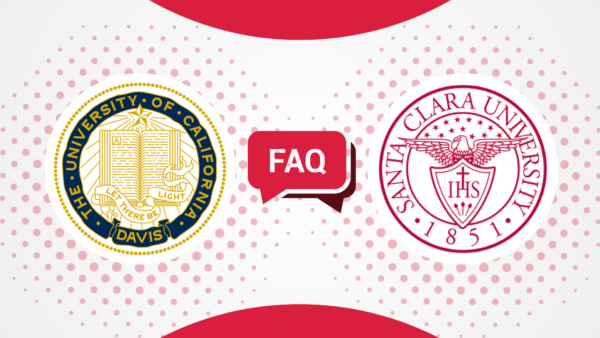
Is UC Davis a prestigious university?
UC Davis is ranked highly, placed at the 28th spot among national universities. It is also a member of the prestigious University of California institutions and is world renowned for its agriculture, forestry, veterinary sciences, and nursing programs.
Is Santa Clara a prestigious university?
While it cannot be compared to the Ivies or other tier-one universities like Stanford or MIT, Santa Clara is relatively prestigious. According to US News, it ranks 60th among US Universities.
Which one is better – UC Davis or UCLA?
UCLA consistently ranks higher than UCD across almost all disciplines except agriculture and veterinary sciences.
What is the acceptance rate of Santa Clara University?
Santa Clara acceptance rates typically lie between 40 and 45%.
Where does Santa Clara University stand in QS Rankings?
SCU is not ranked in the global scale but ranks 85th according to QS US University rankings.
What is Santa Clara University known for?
SCU is known especially for its undergraduate programs in the disciplines of arts, social sciences, humanities, engineering, and business. Its location at the centre of Silicon Valley is also a huge advantage.
Is UC Davis a top-ten school?
UCD ranks 6th among the top 10 public universities in the US, according to US News. When comparing both public and private universities, USD ranks 28th.
You May Also Like
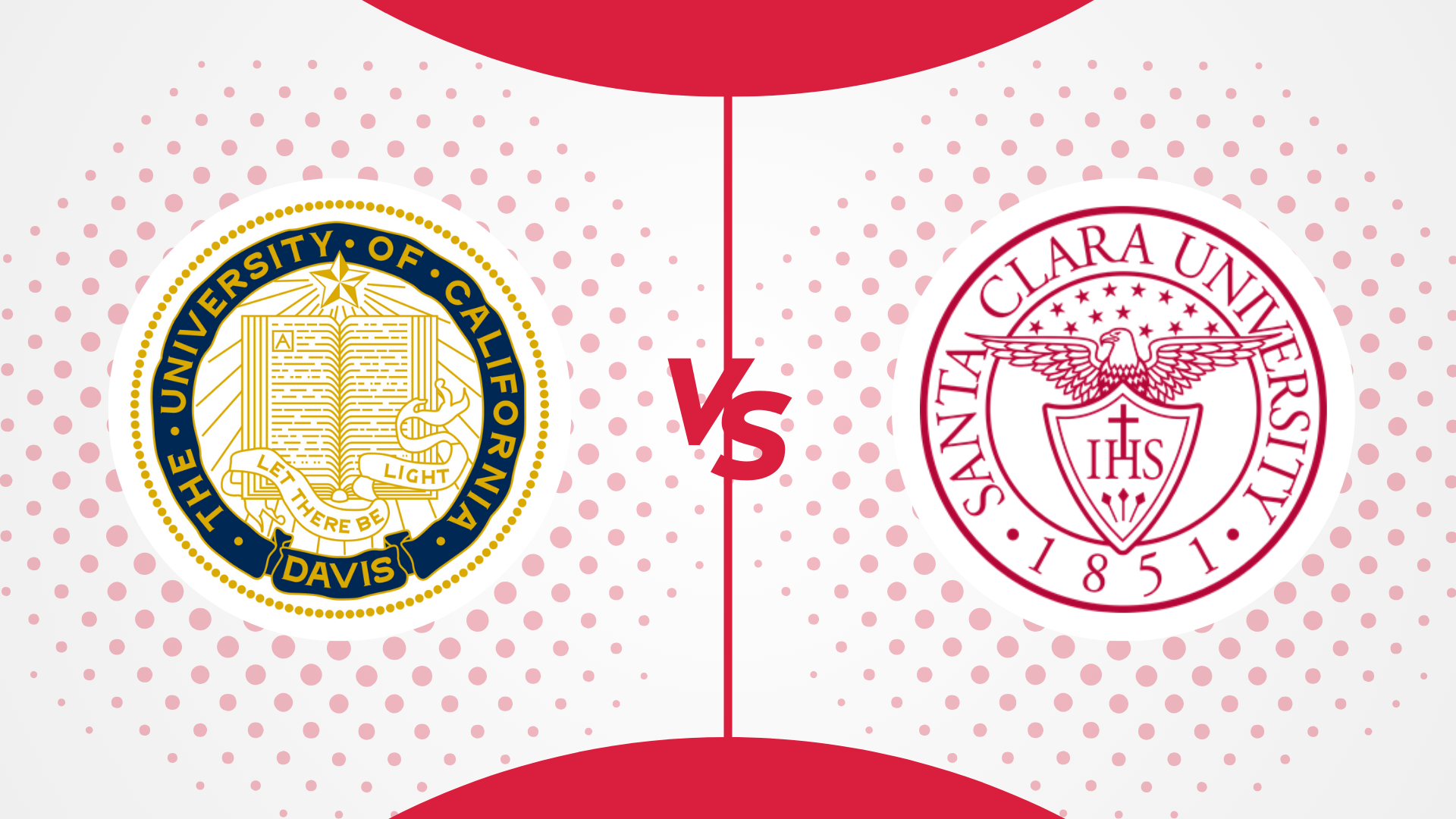
Compare more universities in USA
-
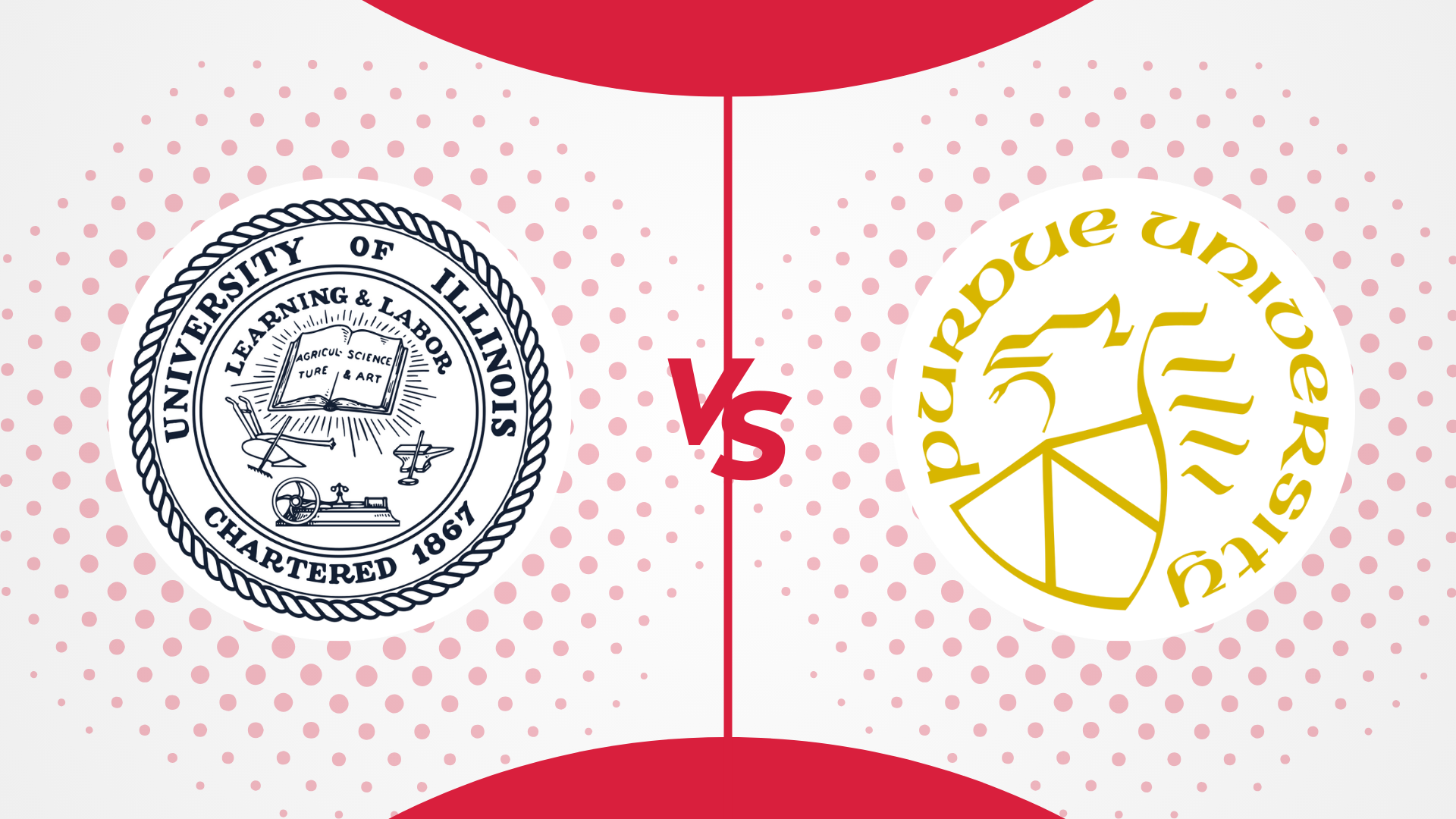
Purdue vs UIUC: How Do They Compare in 2025?
December 16, 2024 -
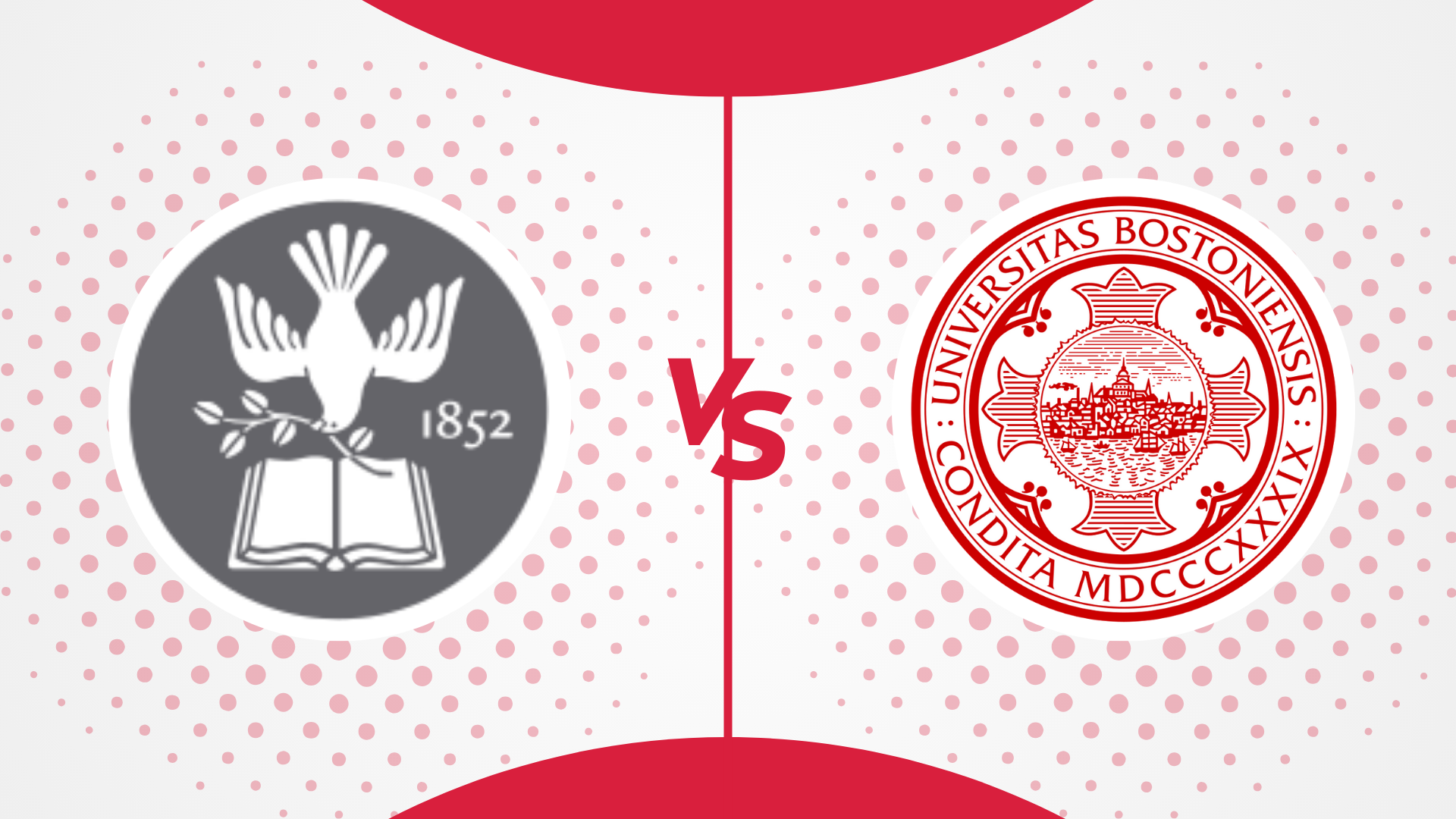
Tufts vs BU: How Do They Compare in 2025?
December 16, 2024 -

UIUC vs Georgia Tech: How Do They Compare in 2025?
December 3, 2024 -

Georgia Tech vs UT Austin: How Do They Compare? [2025]
September 24, 2024 -

UC Davis vs UC Irvine: How Do They Compare in 2024
September 10, 2024 -
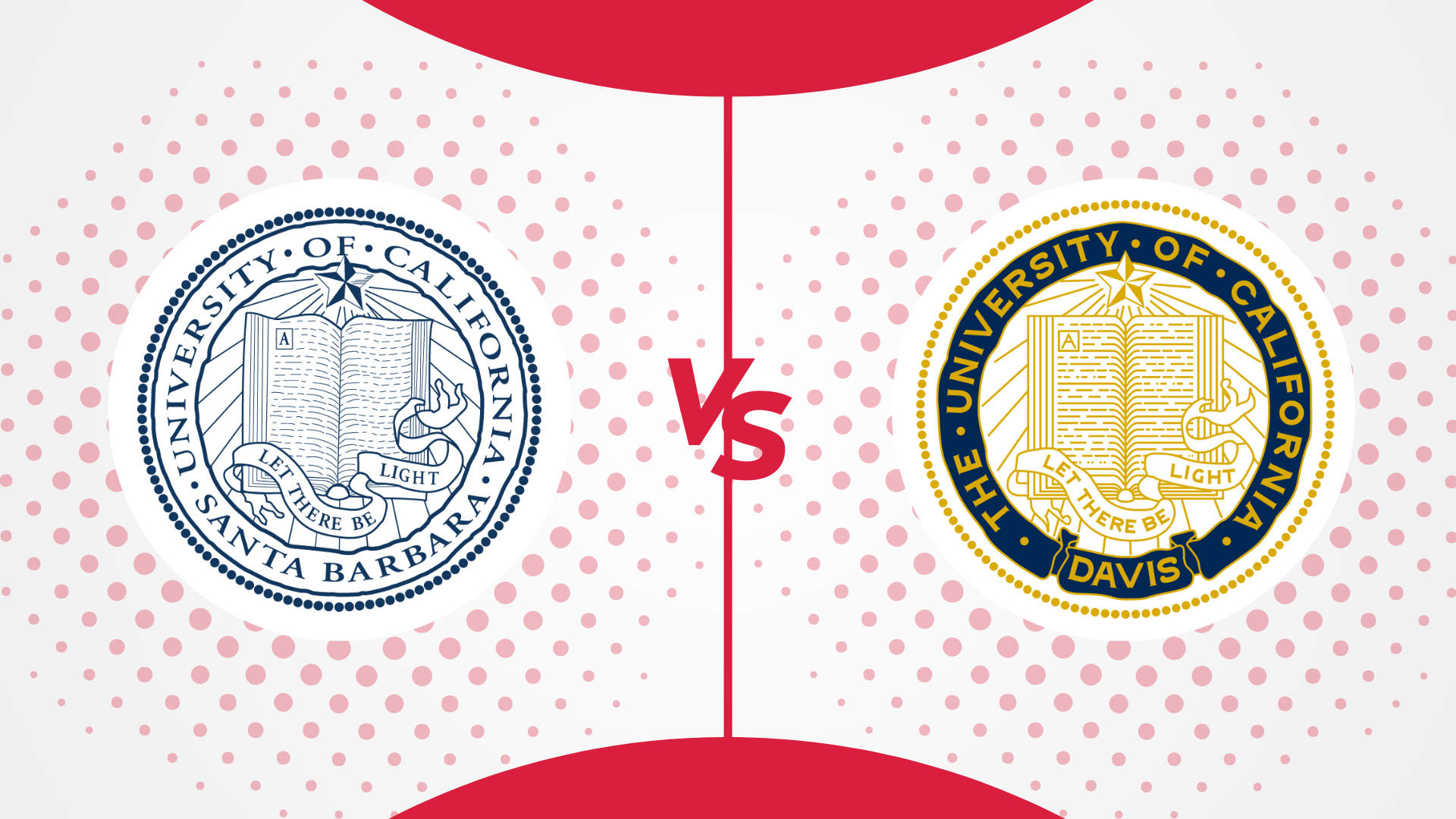
UC Santa Barbara vs UC Davis: How Do They Compare? [2024]
August 30, 2024 -

University of Chicago vs Northwestern University: How Do They Compare
August 20, 2024 -

Georgia Tech vs MIT: How Do They Compare? [2024]
August 7, 2024 -

Caltech vs MIT: How Do They Compare [2024]
August 2, 2024 -

MIT vs Harvard: How Do They Compare [2024]
July 27, 2024 -

Cornell vs Harvard: How Do They Compare? [2024]
July 27, 2024 -

Yale vs Harvard: How Do They Compare [2024]
July 22, 2024 -

Harvard vs Princeton: How Do They Compare [2024]
July 16, 2024 -
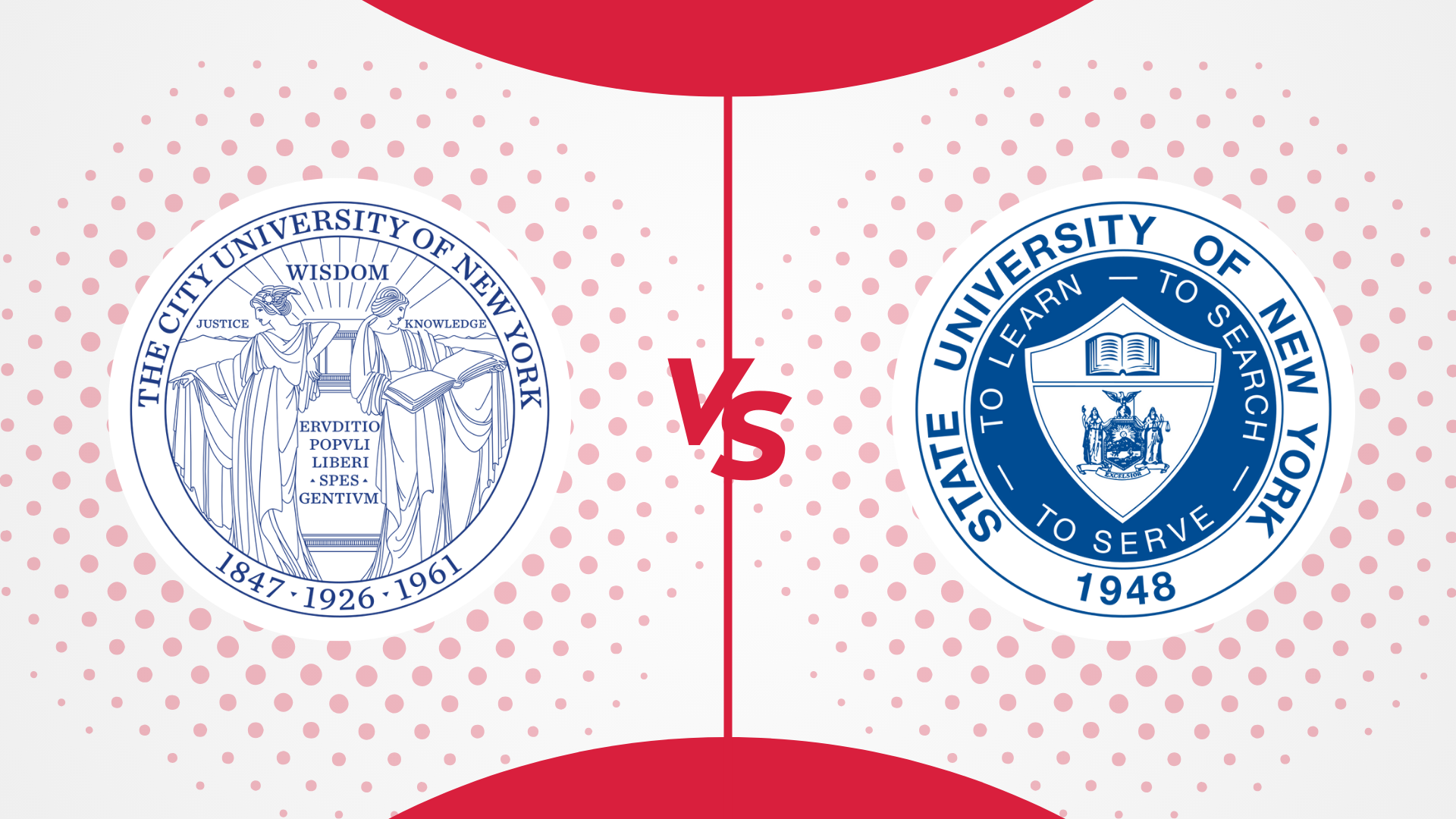
CUNY vs SUNY: Which One is For You in 2024
July 9, 2024 -
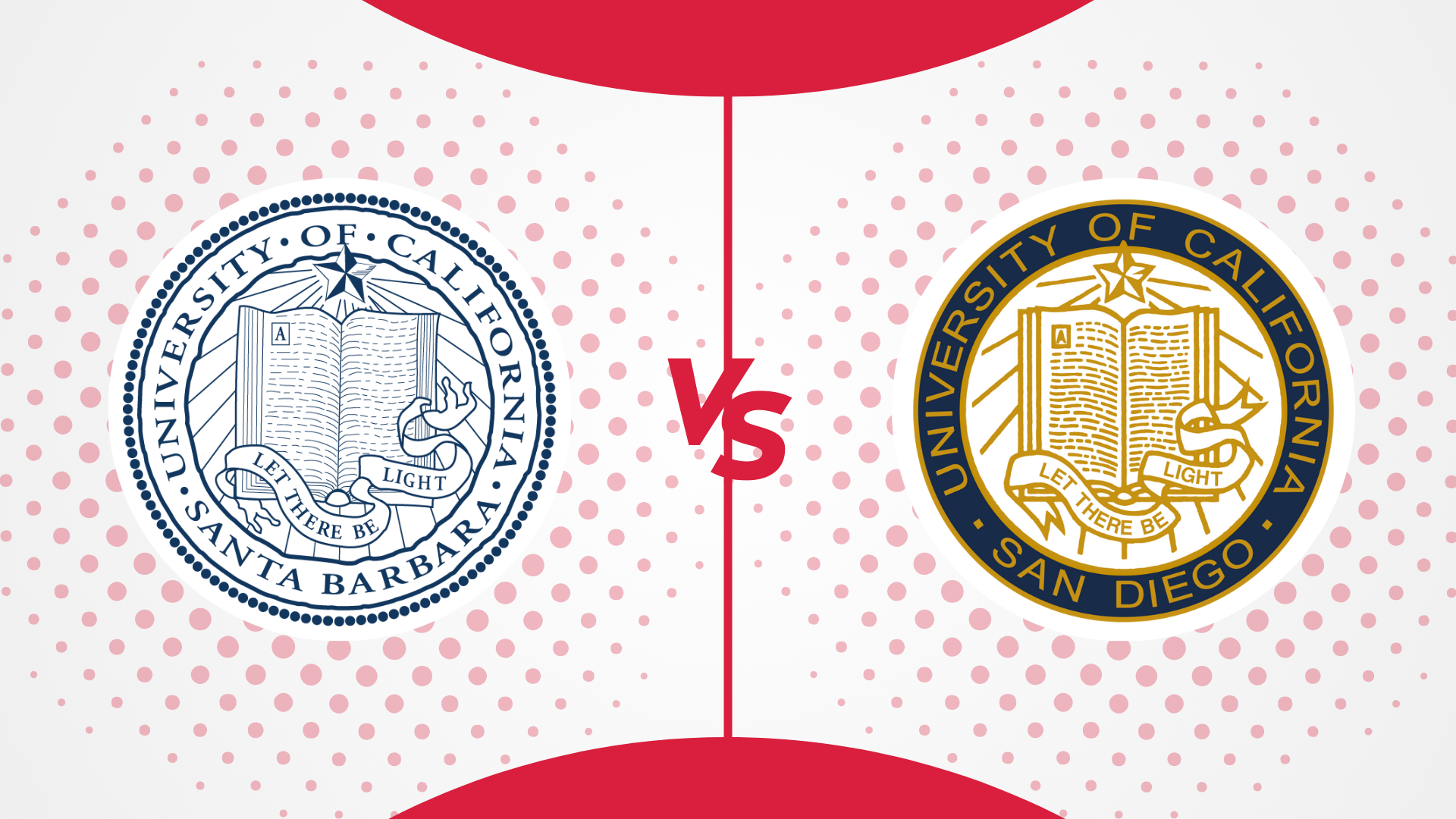
UCSD VS UCSB: Which One is Better For You in 2024
July 9, 2024 -
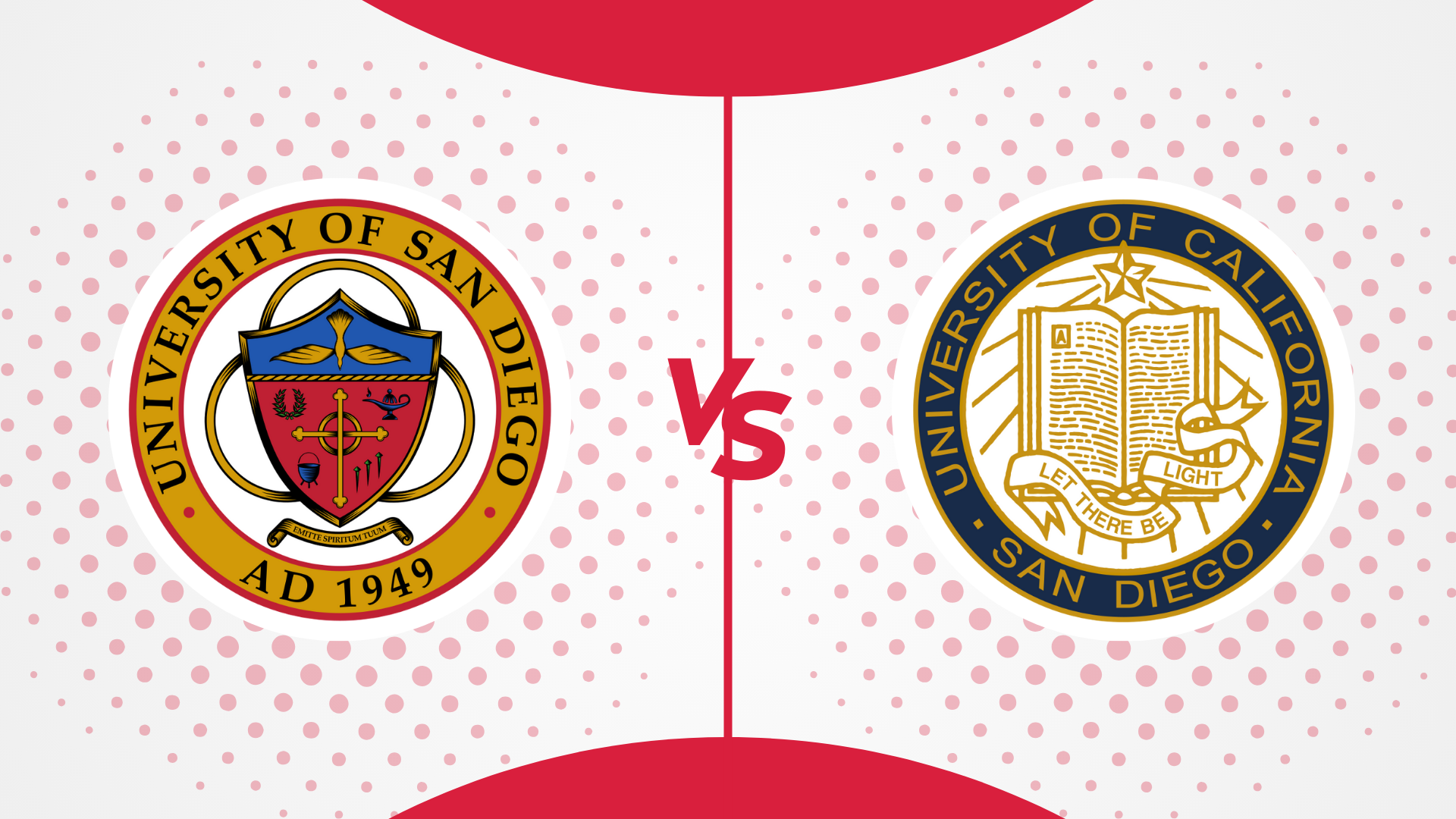
USD vs UCSD: Which one should you choose in 2024?
July 9, 2024 -
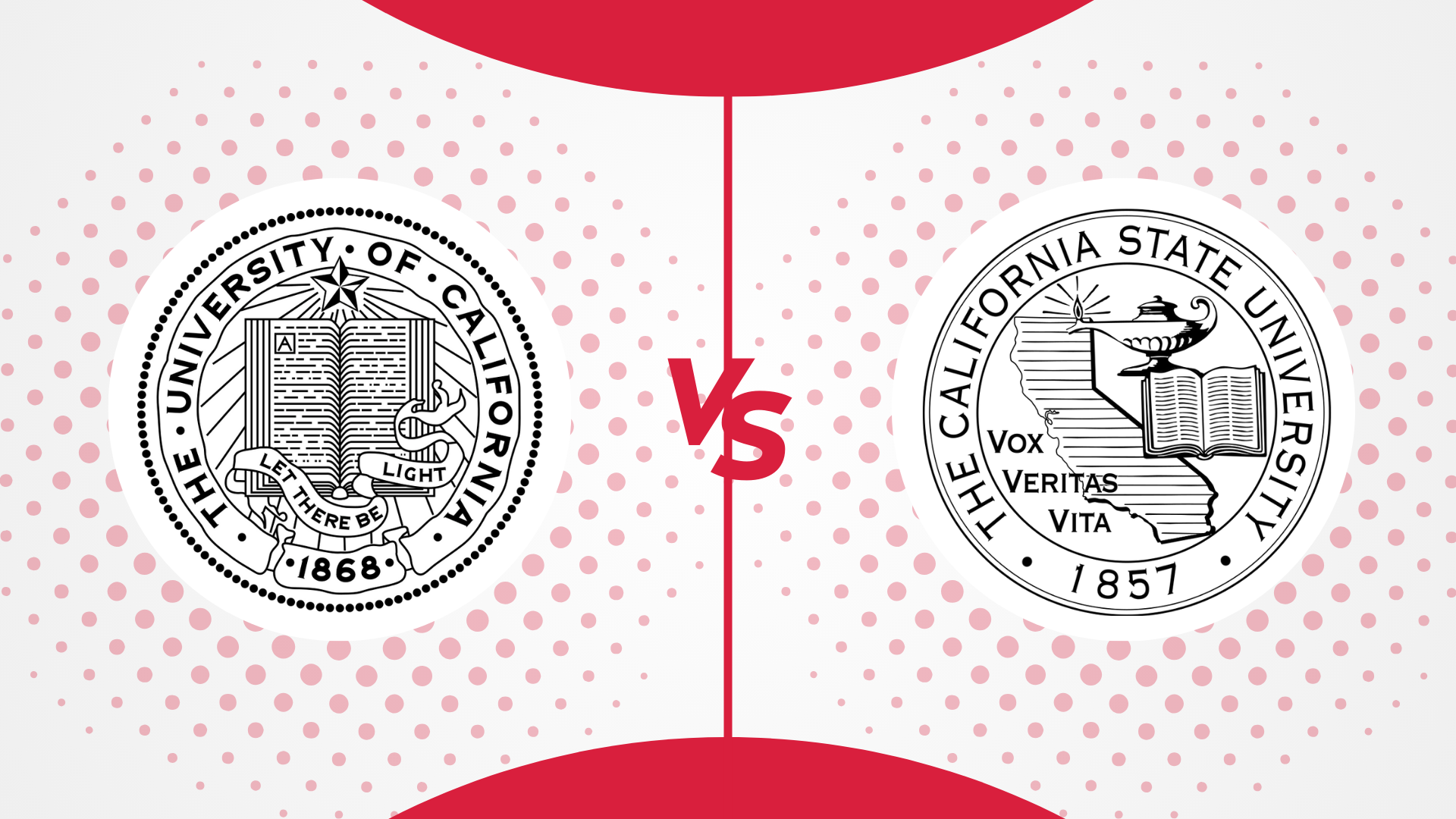
UC vs CSU: Which One is Better in 2024?
July 9, 2024 -
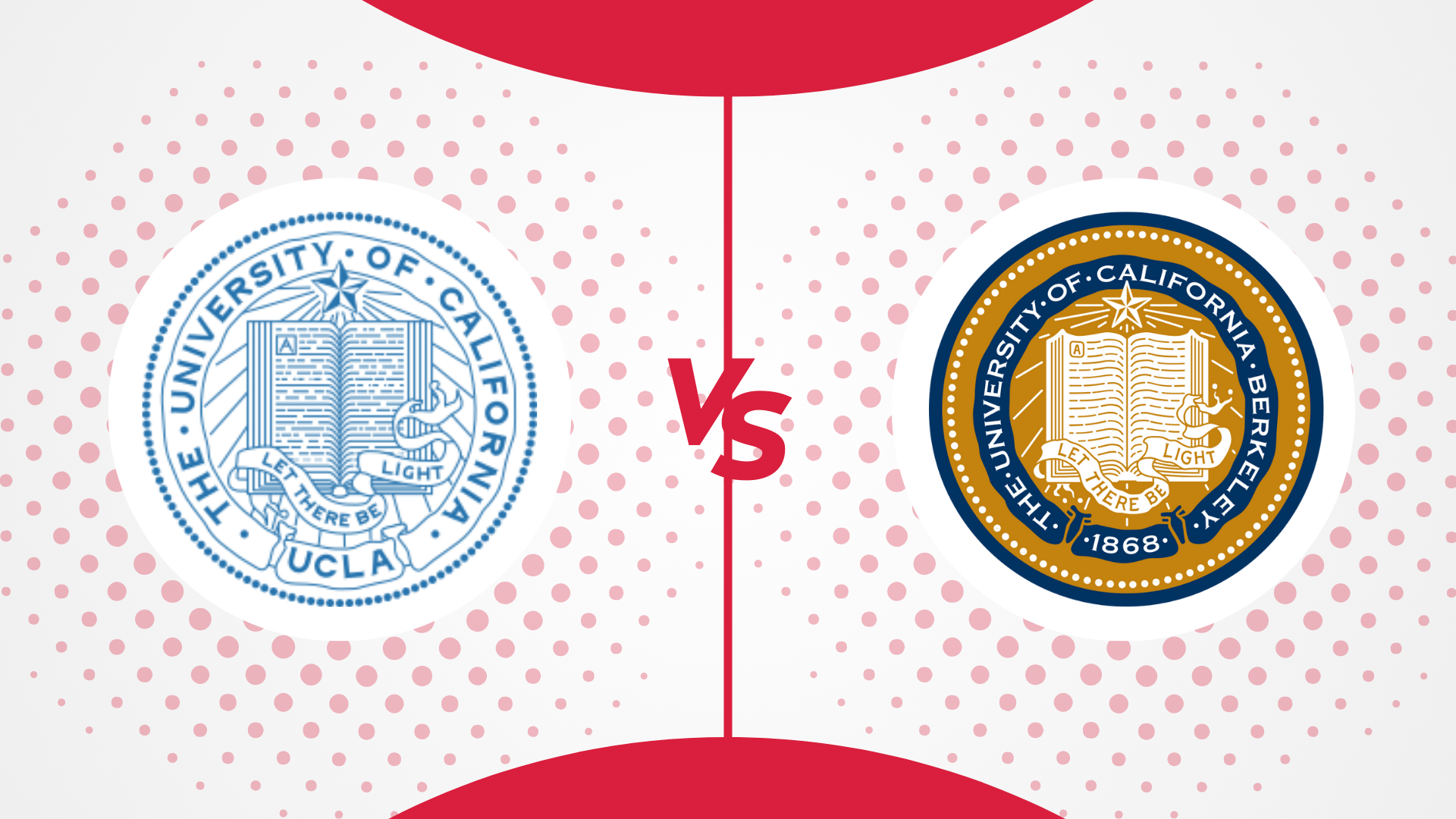
UCLA vs UC Berkeley: Which One is Best in 2024
July 9, 2024 -

University of Arizona vs Arizona State University: Which One is Better in 2024
July 9, 2024 -

Penn State vs UPenn: Which is Better for International Students in 2024
July 9, 2024 -

Northeastern vs Northwestern: Which One is Best in 2024
July 9, 2024 -

Northeastern University vs Purdue University – Which One is Better in 2024?
July 9, 2024 -

Boston College vs Boston University: Which One is the Best in 2024?
July 9, 2024 -

LSU vs UCLA: Which Is Better For You In 2024?
July 8, 2024 -

NYU vs Boston University: Which One Is Better For You In 2024
July 8, 2024 -

USC vs UCLA: Which One Is Better For You In 2024?
July 5, 2024 -
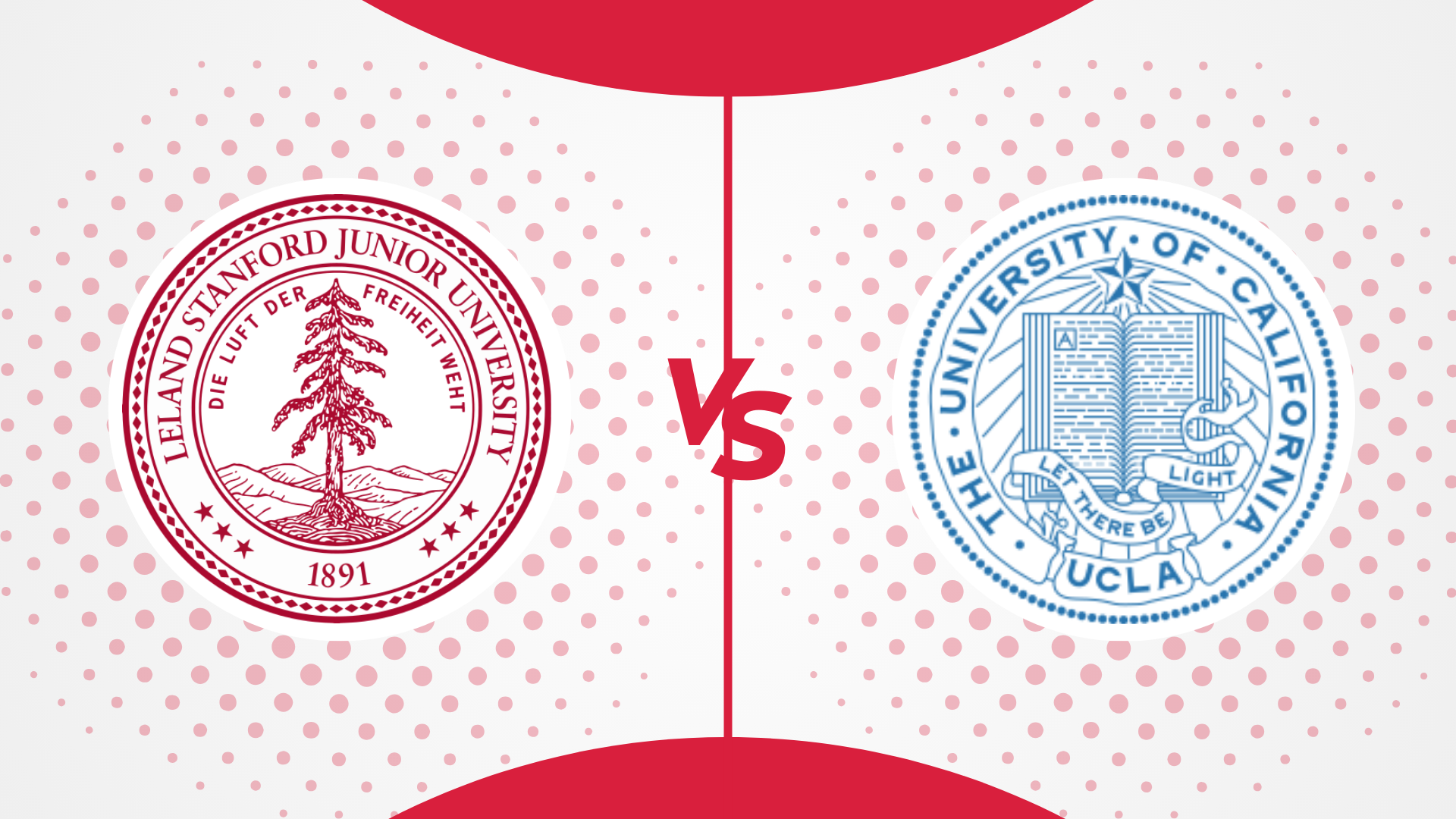
Stanford vs UCLA: Which One is Better For You in 2024
June 28, 2024 -
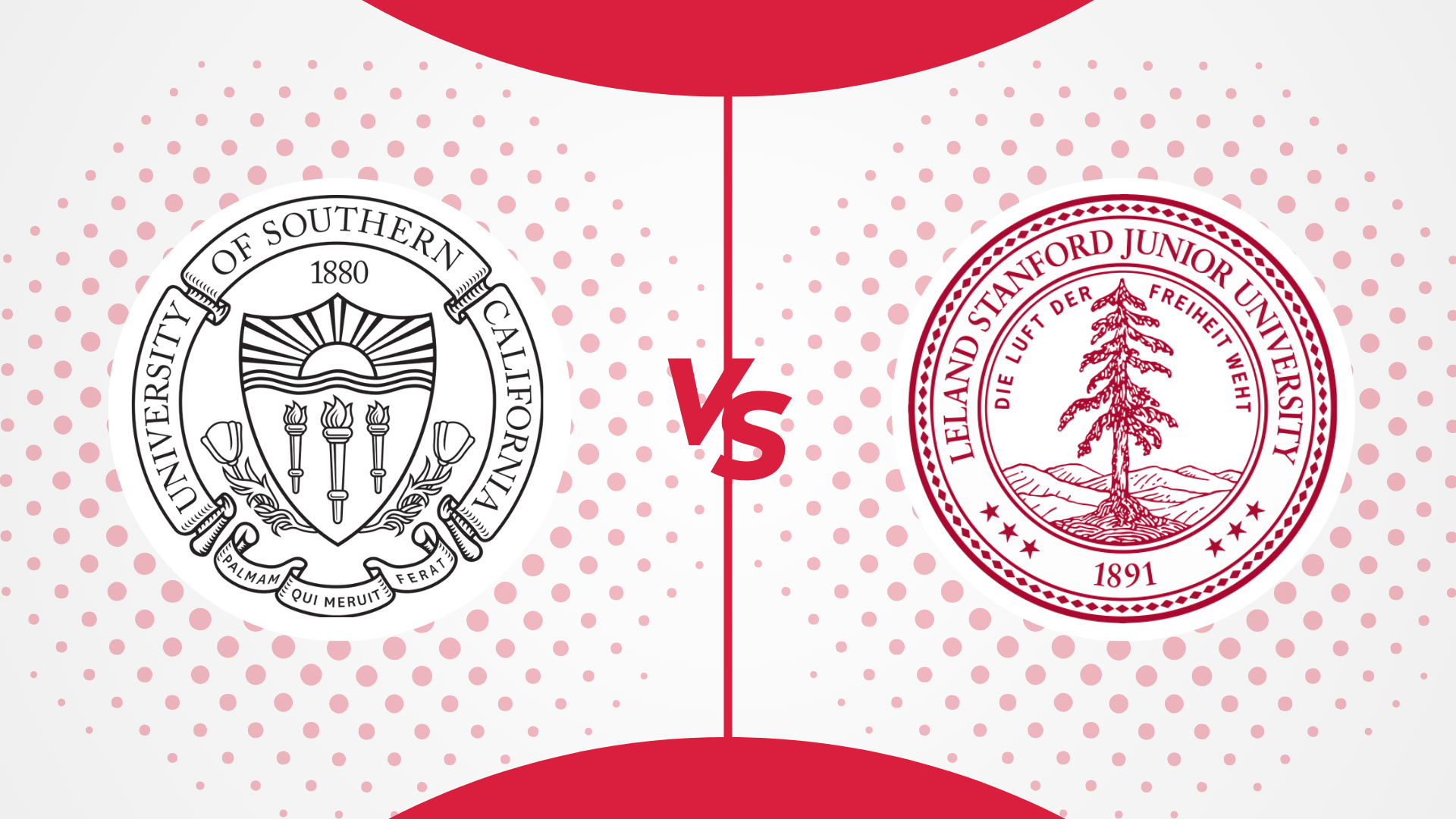
USC vs Stanford: Which One is Better For You in 2024
June 28, 2024 -
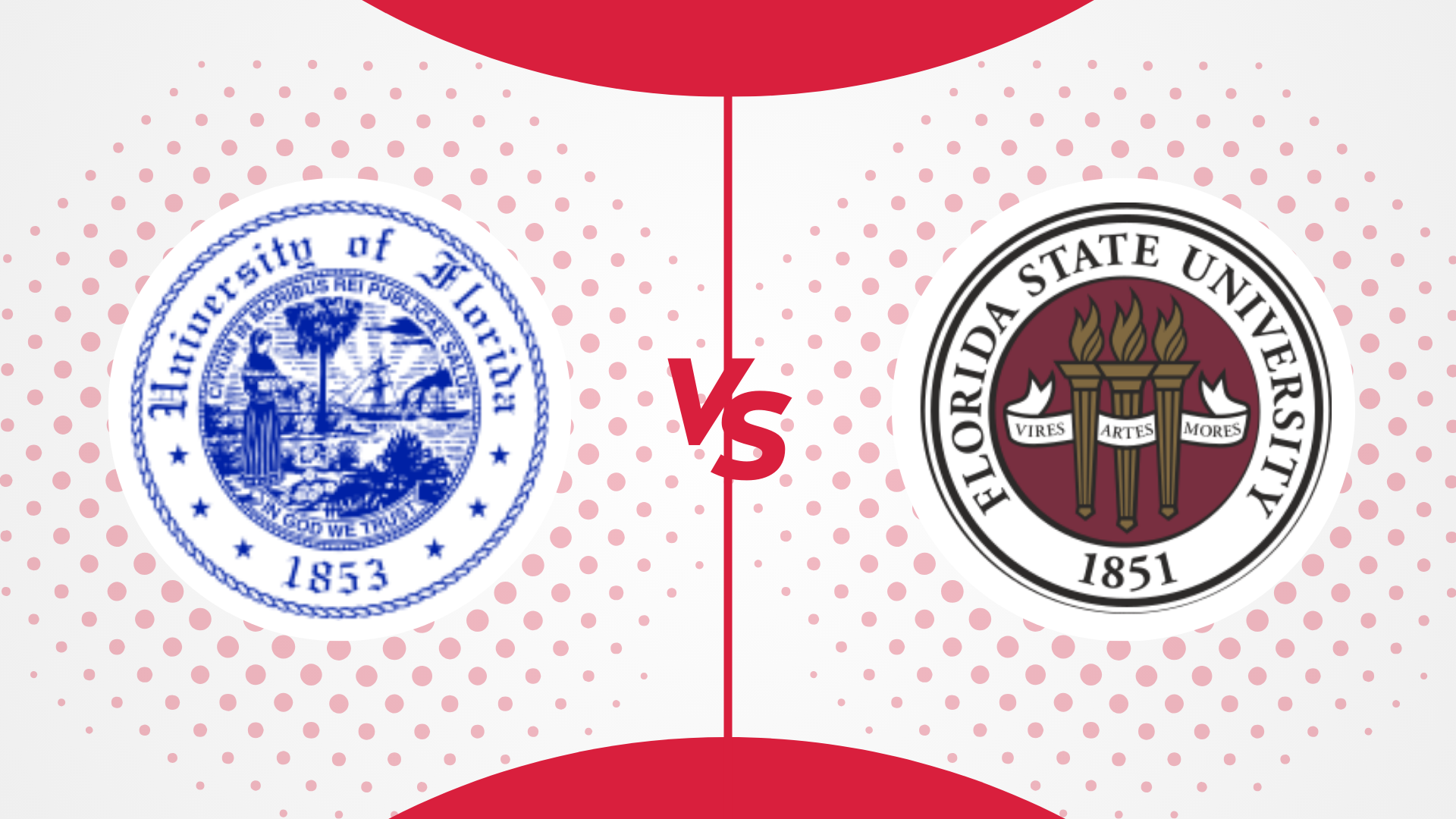
University of Florida vs Florida State University: Which One is Better For You in 2024
June 28, 2024 -

NYU vs Columbia: Which Is Better In 2024?
June 28, 2024 -

Princeton vs Columbia: Which Is Better In 2024?
June 28, 2024 -

NYU vs Cornell: Which One Is Better In 2024?
June 28, 2024 -

Boston University vs Northeastern: Which one is best in 2024
June 28, 2024 -

NYU vs UCLA: Which Is Better For You In 2024?
June 28, 2024
